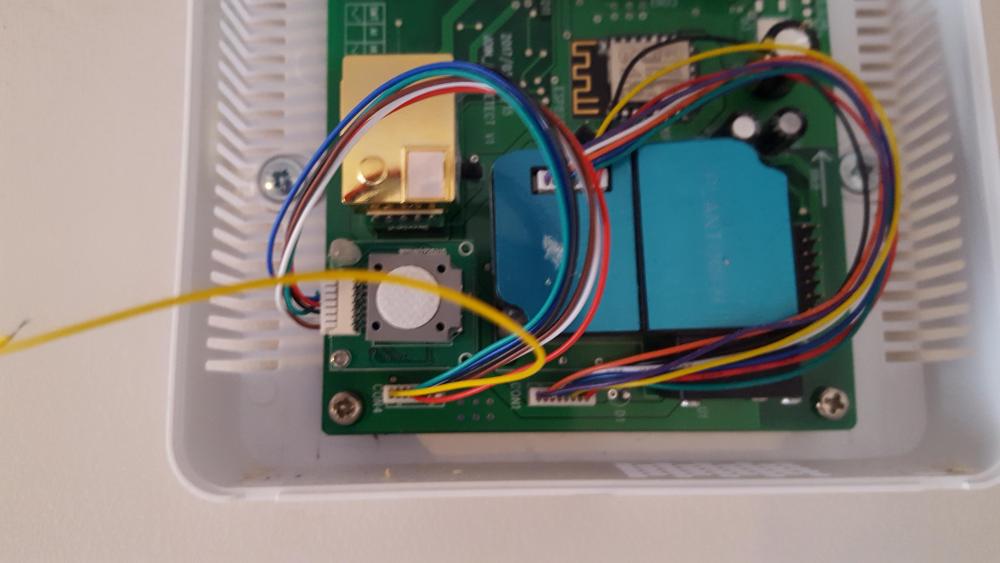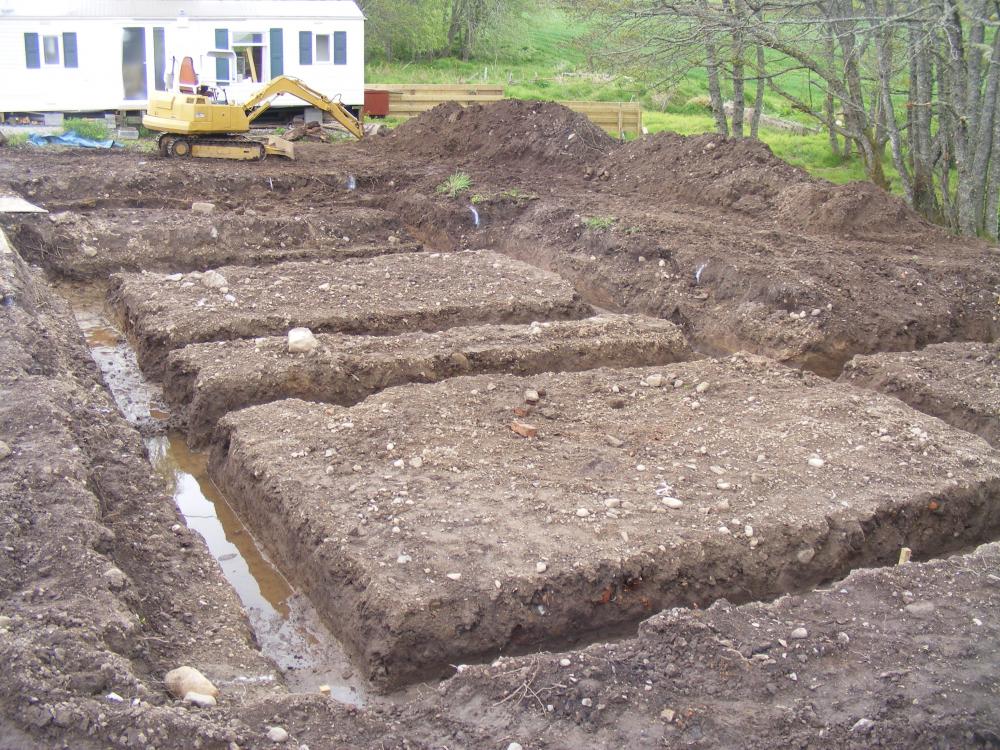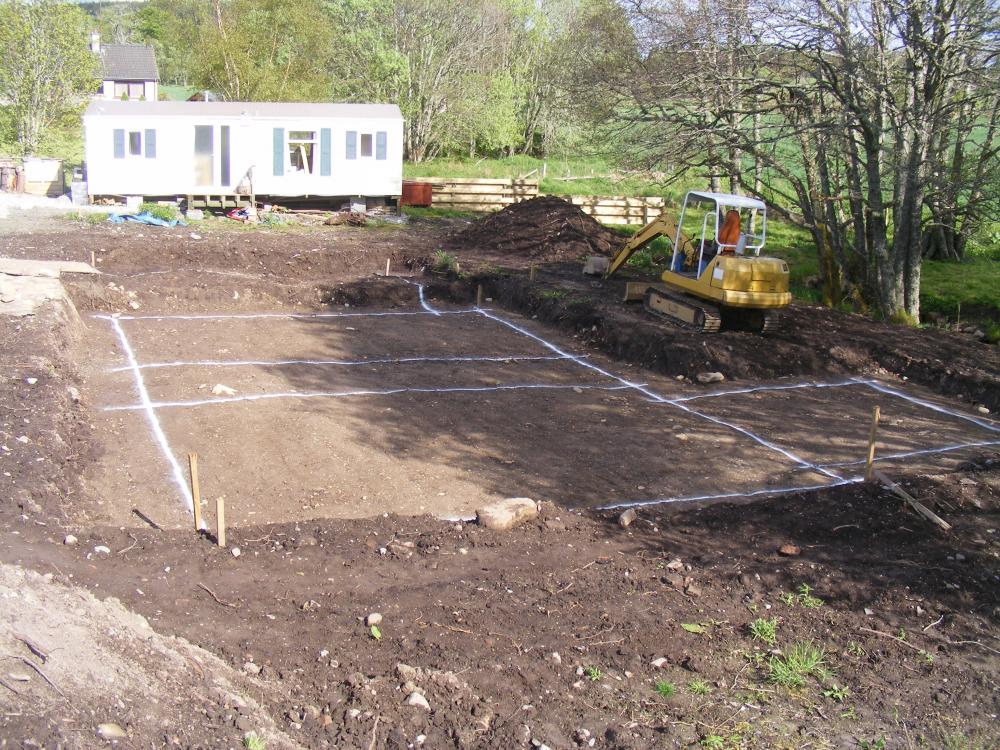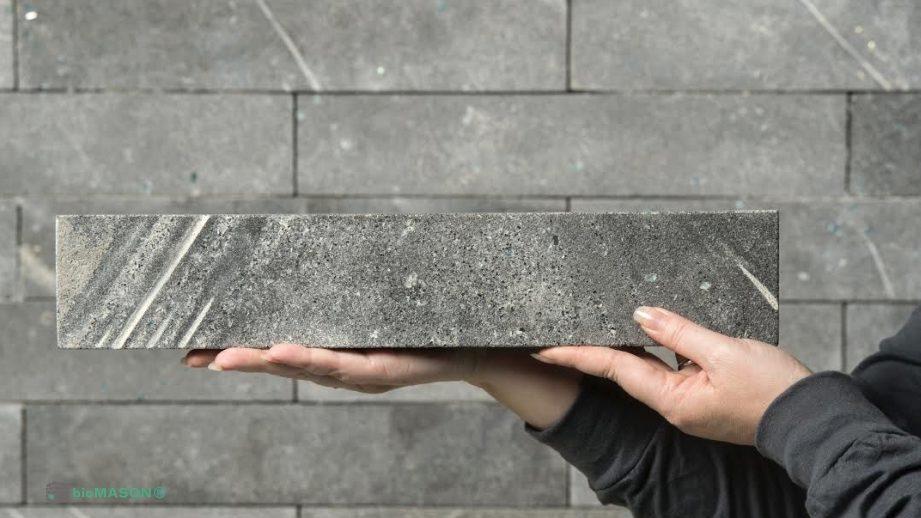Leaderboard
Popular Content
Showing content with the highest reputation on 12/12/19 in all areas
-
I've been on the phone to a few local hire centres and they are offering some great prices for plant and equipment hire over the Christmas shutdown. Basically I'm paying two days hire or weekend rate for hire between 20th Dec and 2nd January. 6m telehandler and 4m platform is costing £390 for nearly 2 weeks hire. Should be over £1k. If you are needing to hire a mini digger, telehandler, working platform, any tools, anytime etc in the near future, Then now is the time to call your local hire centre.6 points
-
Update My MVHR is fixed now, finally. Earthsave sent out a load of spare components and my electrician came out. We had already spotted a loose wire in the box that sniffs the air, situated between the control pad and the unit. Using the Occam's razor theory and rather than go through a lengthy replacement procedure we decided to try this multi-strand connection first. 5 minutes later, all was well and the humidity in the house is falling nicely. Here's a photo of the offending loose wire, it's the yellow one. I'm not at all sure that the fault was related to the power cut, but coincidental and vibration from the staircase caused something that was barely attached to finally pop out.5 points
-
I did my own foundations, just the digging, the builders did the concrete pour and built up from there. I marked it all out with a long tape and triangulation, and marked the centreline of each trench and dig to that. The builders said I would never get it accurate enough. When they came and surveyed it properly before the pour, they found it to be spot on.2 points
-
Post it to @Onoff to add to his pile of tat useful items for future projects....2 points
-
In my limited experience electronics either works or it doesn't [¹]. Intermittent faults are usually mechanical things like connectors. With any luck you've jogged something like that which will now work happily for ages but if it does fail again try reseating the connectors if possible. [¹] after you turn it off and turn it on again if there's any software involved.2 points
-
Welcome fella. I am going to have a few questions for you, so make sure you stick around for a while.1 point
-
https://cpc.farnell.com/crabtree/7009/seeklight-each/dp/PL11861?mckv=siCEoANsv_dc|pcrid|224681503328|kword||match||plid||slid||product|PL11861|pgrid|47203068935|ptaid|pla-823944588639|&CMP=KNC-GUK-CPC-SHOPPING&gclid=EAIaIQobChMImu6t4L6w5gIVjbTtCh1n3QJ2EAQYBCABEgJ6O_D_BwE1 point
-
1 point
-
Thank you, really appreciate your advice. I can now move out of our temp (nearly 3 year) converted leaking stable/shed!1 point
-
I was considering stone cladding in a similar way as yourself, to form the entranceway. The rest of the house is to be white k rend and larch cladding and sits 4m from a traditional random stone dyke. I thought this would involve too many different materials in close proximity to each other and be “too much”. Coincidentally a stranger who was passing my site turned out to be an architect. He agreed as he felt with self designed houses people often make the mistake of trying to incorporate too many things eg materials features. Obviously your site / design will be different and you should do what you want.1 point
-
Any idea where has them in stock? Lots of places advertise them at reasonable prices but don't actually stock them. I have a bunch of temperature and temperature & humidity sensors connected to various things. My central logger is a RPi (running Raspbian with my Python code) but only one of the sensors (a DS18B20 temperature sensor which measures the temperature of the flow to my study radiator) is directly connected to that. The rest talk to the Pi via Wi-Fi: 1) 3 vAir [¹] monitors which log via MQTT. One does temperature, humidity, pressure, CO₂ and light level in the bedroom. The other two do temperature and humidity in the kitchen and my study. These are based on the ESP8266. 2) 1 ESP32 in the living room which has a DS18B20 running my own firmware which sends the temperature via UDP. 3) 1 Sonoff TH16 (ESP8266 based) in the kitchen with a DS18B20 running my own firmware to report the temperature in the fridge salad tray via UDP and control the power to the fridge as the fridge's own thermostat doesn't work properly. 4) 1 Sonoff TH16 with a DS18B20 with my own firmware underemployed in the airing cupboard to report the temperature of the top of the DWH cylinder coil. The DS18B20 directly on the Raspberry Pi is connected via a USB 1-wire bus master because I had one (originally used on my laptop) and because logging via the One Wire Filesystem (apt install owfs) was so convenient in Python. The more direct and, in some ways, more-convenient-for-wiring way to connect DS18B20s to a Pi is via GPIO pins. Unfortunately, AFAICS owfs doesn't work with that. That's a long-winded way of saying I've tried all the likely combinations except the one I'm about to actually recommend. ? So what do I think @Onoff would be best doing? Get a Raspberry Pi (any one with Wi-Fi that's cheap and available), connect the some DS18B20s to a GPIO pin with a suitable pullup resistor and use whatever code to is needed (must be documented all over the place but I haven't looked, yet) to put times and temperatures in a file then plot the results with a spreadsheet or whatever on his main system. The advantage of the Pi over an ESP8266 or ESP32 or whatever is the proper operating system which will be fairly familiar to an Ubuntu user who's comfortable using the command line and the availability of plenty of space for storage. With an ESP thingy you'd need to send the data recorded to another always on computer for logging which might not be ideal. [¹] Sadly the chap making these has given up. I think he wasn't charging enough, if he'd have charged half as much again it wouldn't have been too expensive but might have been worth his while to continue.1 point
-
Hi Peter I called Sennocke, they say they are part of Buildzone who told me we would lose our site insurance and that was that. He said they should have told me about them and they do provide buildings and contents cover as long as completion is provided within 90 days, yippee. Not sure of cost as I am waiting for them to email over but that has made my Christmas. Thanks to you and Sennocke.1 point
-
I was reminded recently when going through old family photos, of the time when I was 14 or 15 digging by hand the foundations for an extension. Had to go over 9ft deep to go underneath storm and foul drains, wrap them in EPS, install more rebar than I care to remember, and then mix and pour all by hand. The BCO said afterwards that we could have built a 5 story block of flats on what we (I) had done. And all I got was a new stereo !!1 point
-
I done mine. 500mm deep strip foundations all poured in a single day. As above measure and measure and check and check and get some else to measure and check before you even think about moving on to the next stake in the ground.1 point
-
measure 3 times --mark twice-- expensive mistake if you don,t get all the pipes in right place1 point
-
I have it on a few sections of my house. You can get everything from Z style blocks to real stone cut down to 40mm slips and obviously these differ widely in cost.1 point
-
Yep did a stepped foundation in sand, depths anywhere from 600-1700mm deep. All poured as a single pour then ground bearing slab added after.1 point
-
You would need to see them in the flesh to see if it is possible to mount them on the wall with the flex exiting through the back into the wall. Even then, if not designed for that, you would probably have to set a round back box into the wall to provide space for some terminals. Or just keep looking.1 point
-
1 point
-
Just bin the thing. If it went anywhere near prematurely it’s probably down to continuously rubbing against a surface imperfection on the inside of the vessel. Move on and don’t waste time / money, they’re just too cheap to buy / replace.1 point
-
If that's the sensor there already then all you need is a blank faceplate - normally available in most accessory styles. Drill and fit your sensor.1 point
-
maybe the blocks were wet onsite before errection --then froze --breaking them up to start with all these type of aero blocks ,must not get wet +frozen or they loose integrity over time1 point
-
I had a look at the policy wording here and couldn't see any mention of building control approval but they don't cover contents where... "Loss or damage caused by building work which involves alterations, renovations, extensions or repairs." https://www.aviva.co.uk/insurance/home-products/buildings-insurance/?source=GP7A&entry=117165&cmp=ppc-hom-prd-goo-Bui_Main_Phr&gclsrc=aw.ds&&gclid=CjwKCAiAxMLvBRBNEiwAKhr-nPl02vGiyPT4QWotsJGXnr3o25JzXmxW2nPqxdds4Bp8pK24IrQWhhoCPvkQAvD_BwE Policy wording.. https://www.aviva.co.uk/content/dam/aviva-public/gb/pdfs/personal/insurance/home/home-insurance/home_insurance_policy_wording_insurance_home_nhdhg6080_v35_012017_140617.pdf There must be thousands of properties with extensions that were built without building control approval.1 point
-
If you look at them, that was a standard part of the hall layout in smaller Edwardian and 1930s house which, though modest compared to a mansion, try to ape the style of larger houses. There could be some or all of: - A space inside the front door before the staircase - A small floor pattern to make it look bigger - Something to create the impression of further distance eg a chair, panelling or wall decoration - Something that can be perceived out of the other end of the hall - in your case it could be a vista through your living area and then through a window to a focal point at the end of the garden. - if you want you could try a visually closed door with a surprise space beyond, or orientation of long, narrow floor tiles. - something to stop your eye visually half way so it lingers. The trick is choice of elements, and how they are used to do what you want.1 point
-
I hesitate to post this as you probably need to be gas Safe registered to work on a boiler. Refurbished Main PCBs appear to be £35 or £60 depending on ??? on eBay. https://rover.ebay.com/rover/0/0/0?mpre=https%3A%2F%2Fwww.ebay.co.uk%2Fulk%2Fitm%2F332386761691 https://rover.ebay.com/rover/0/0/0?mpre=https%3A%2F%2Fwww.ebay.co.uk%2Fulk%2Fitm%2F332386777784 Not sure what difference there is.1 point
-
They pick one that they know is way above what your neighbours are paying and leave you to appeal if you want it altered!1 point
-
1 point
-
On the subject of alternative blocks https://biomason.com/ 'bioMASON’s technology uses microorganisms to grow biocement™ based construction materials. The Company’s products include proprietary manufacturing processes and materials used by licensing partners for incorporation in existing facilities or on-site manufacturing. The strength of biocement™ materials is comparable to traditional masonry, and is used as a green alternative. bioMASON’s products are produced in ambient temperatures using locally available materials. bioMASON enables savings in energy costs and zero carbon emissions.' Looks awesome. Presumably rather expensive. If you are really keen, they just opened a $18M funding round https://www.wraltechwire.com/2019/12/10/rtp-startup-biomason-launches-18m-fund-raiser-lands-first-5m/1 point
-
Some more block examples ordered by density (not comprehensive and updated last year) https://docs.google.com/spreadsheets/d/1FKs4IIEIqb-KFJl63zsR0uj2BXAnEJMyyQbyeiZNylc/edit?usp=sharing @Oz07 expanded clay examples: fibolite, fibo 850, aglite ultima1 point
-
1 point
-
Well it's a year and you're right. It kind of fizzled out without incident. I did apply to a separate part of the council (partly as a joke) for permission to remove the relevant trees which was granted. I suppose this would have undermined their insistence on root protection but either way nothing came of it. One of the stresses with self build is that you don't know until afterwards which bits are very important and which seem like they might be, but turn out not to. A bit like life, I suppose...1 point
-
Yes, not at all hard to do. "smart" meters log and report usage to a reasonably fine level over the network, and the data can be analysed and an approximation as to what type of device is being used can easily be determined. For example, a load increase (or decrease) of about 3 kW, for a period of an hour or two, would almost certainly be an immersion heater. A similar load switching on and off several times for a period of an hour or so would probably be an oven. A load of around 7 kW on for several hours pretty much has to be a car charge point. A load that comes on at a modest level, then reduces over time, is probably an ASHP. Tracking energy usage, and correlating it with the time of day, day of week, outside temperature, etc, could allow a pretty accurate pattern of use for all fairly large appliances in the house to be built up by your energy supplier. By doing this, they get a better profile of you as a customer, so can then target you for a range of purposes, which may include selling the data they collect to third parties (for example, knowing your pattern of use of an electric car would be of interest to insurers, car suppliers, etc).1 point
-
It's an incentive scheme to get people to have a "smart" meter fitted. Once you have a "smart" meter you cannot get it switched back to a standard one, and so can be subject to any variable tariff scheme that the suppliers come up with. The suppliers are desperate for more people to have "smart" meters, as it enables then to reduce their risk in buying wholesale electricity on the 30 minute slot, buy-ahead, spot market. They can vary tariffs every 30 minutes to consumers if they wish, so once people have "smart" meters it's going to be pretty hard to compare one supplier with another as far as price goes. I've been trying to track the Octopus Agile tariff (which is a variable rate one) with our standard E7 tariff, and it's incredibly difficult to do. Right now, many of the "smart" meter incentive tariffs look quite attractive, but I can't see this lasting, TBH.1 point
-
Now go and propose you are installing a HUGE electric boiler and the voltage DROP will exceed permissible limits and you demand they upgrade their infrastructure. Throw in a non inverter driven heat pump with a huge start up current for good measure. I would be interested of you could get an electrician to measure the loop impedance at the supply point. Or even if you could do a quick and dirty method (I will tell you how if you have an ac volt meter)1 point
-
The icons should be in a .dll or .exe file and you can extract them using an icon viewer or extracter. Can't rember which I used when I used to do this to customise things1 point
-
0 points
-
4 or 6 bolts round the rim but make sure it’s definitely depressurised as the bladders can fly quite a distance ...... according to what a friend told me .. ? :cough:0 points
This leaderboard is set to London/GMT+01:00















